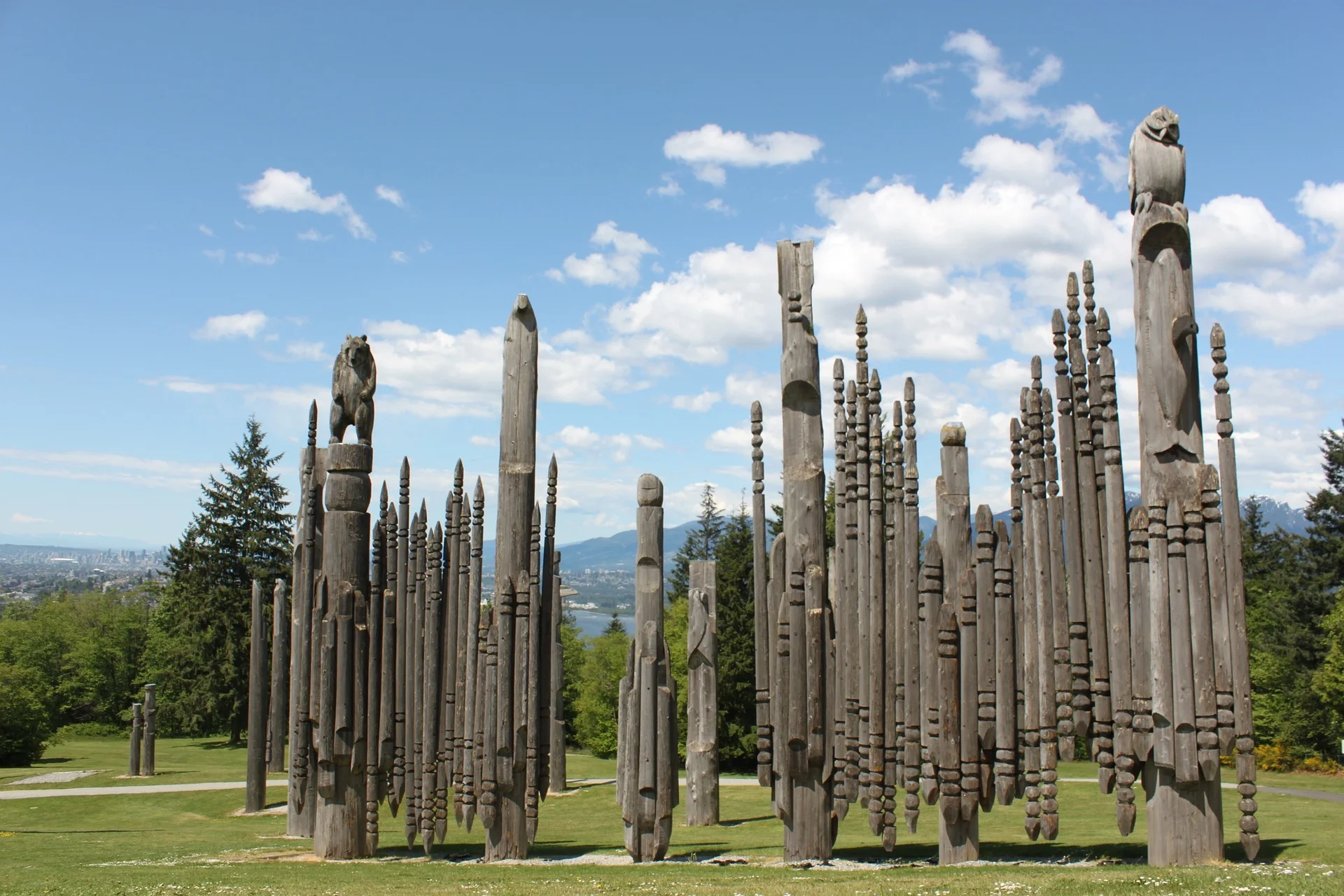Totem Poles from The Pacific Northwest Coast
Most people not familiar with Native American culture may associate the totem pole with all Native Americans. However, this is not factual. As a matter of fact like the teepee only a specific grouping of Native Americans constructed these works of art. The Totem Pole was constructed by the Native Americans that resided in the Northwest Coast.
Pacific Northwest Coasts
Complete with stunning ridges bristling with firs shoulder into the cascading sea. Rain laps the twisting rivers drowned at their mouths. Footholds for human habitation is narrowed by an army of dark-green forests. As a result of geographical location, this area gave birth to a distinct culture within the Indigenous population.
To Europeans of the time, the Northwest Coast Indigenous people appeared as an anomaly complete with Totem Poles and potlatches. However, when you look closer we can see this area was the center of its hemisphere. Drawing ideas and technologies from Asia and American and reworking them under its own clearly articulated values.
Distinctive Culture of the Northwest Coast
Despite the difficulties of archaeological investigations along the coast the outlines of the culture in this area has been mapped sufficiently to show that historic cultural patterns have been well developed. As a matter of fact, the culture has been well developed since the stabilization of the sea level around 3000 B.C. In addition, many distinct traits go back to the first millennium B.C. Evidence suggest that the Northwest Coast cultural pattern were forged by the ancestors of the Wakashan and Salish communities. The populations distinct style of life was largely influenced by environmental factors.
Cultural Pattern Among the Northwest Coast
Respectfully there was a single basic cultural pattern among the region. This pattern included reliance upon fish and sea mammals, which were supplemented by shellfish, deer, and other land game. These included birds, berries, roots, and seeds.
Individual and autonomous villages organized on the basis of lineages, recognized an upper class and commoners. All managed by a chief assisted by aides and a doctor. All with the interest in the accumulation of wealth, which was counted in standard units of value.
Totem poles were sculptures carved on poles or posts hence their name. They included symbols or figures made of trees from the region mostly red cedar. The carvings and figurines symbolized a variety of cultural beliefs helps within the region. These included familiar legends, clans lineages or other important events.
The Totem Pole in Native American Culture
Occasionally, totem poles would serve as signs for visitors to the village or a mortuary vessel for the deceased ancestors. There is evidence to support that Totem Poles carvings were preceded by a long history of decorative carvings, that contained stylistic features from other prototypes. Due to economic restraints and inefficient tools, the totem poles likely did not appear in abundance until around the early 1900's.
The totem poles were typically carved from rot-resistant trees (referred to as giant cedar or western red cedar), which eventually decayed due to the region's moist and rainy climate. Due to these conditions, few totem poles remain before the 1900's.
Along the Northwest Coast, totem poles served as important depictions of family lineage and the cultural heritage of the native peoples who lived within the region.

